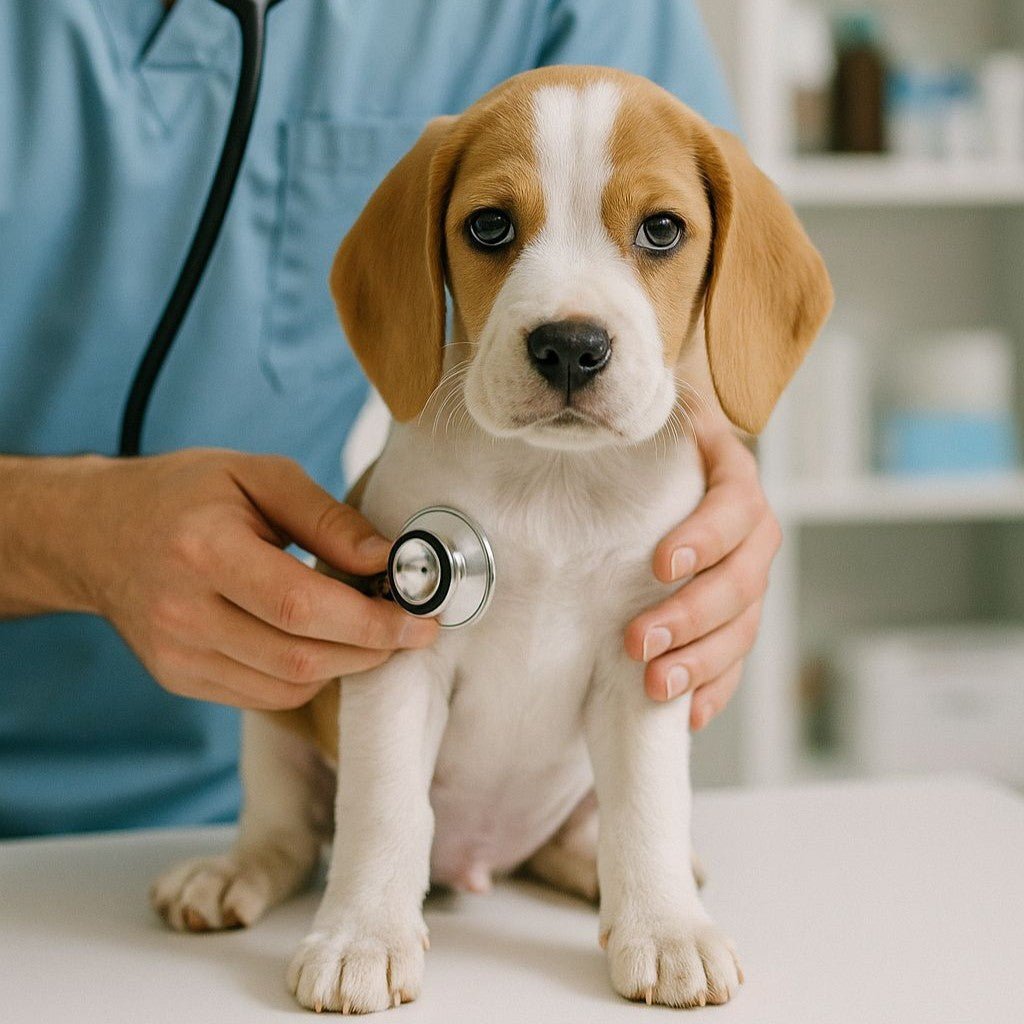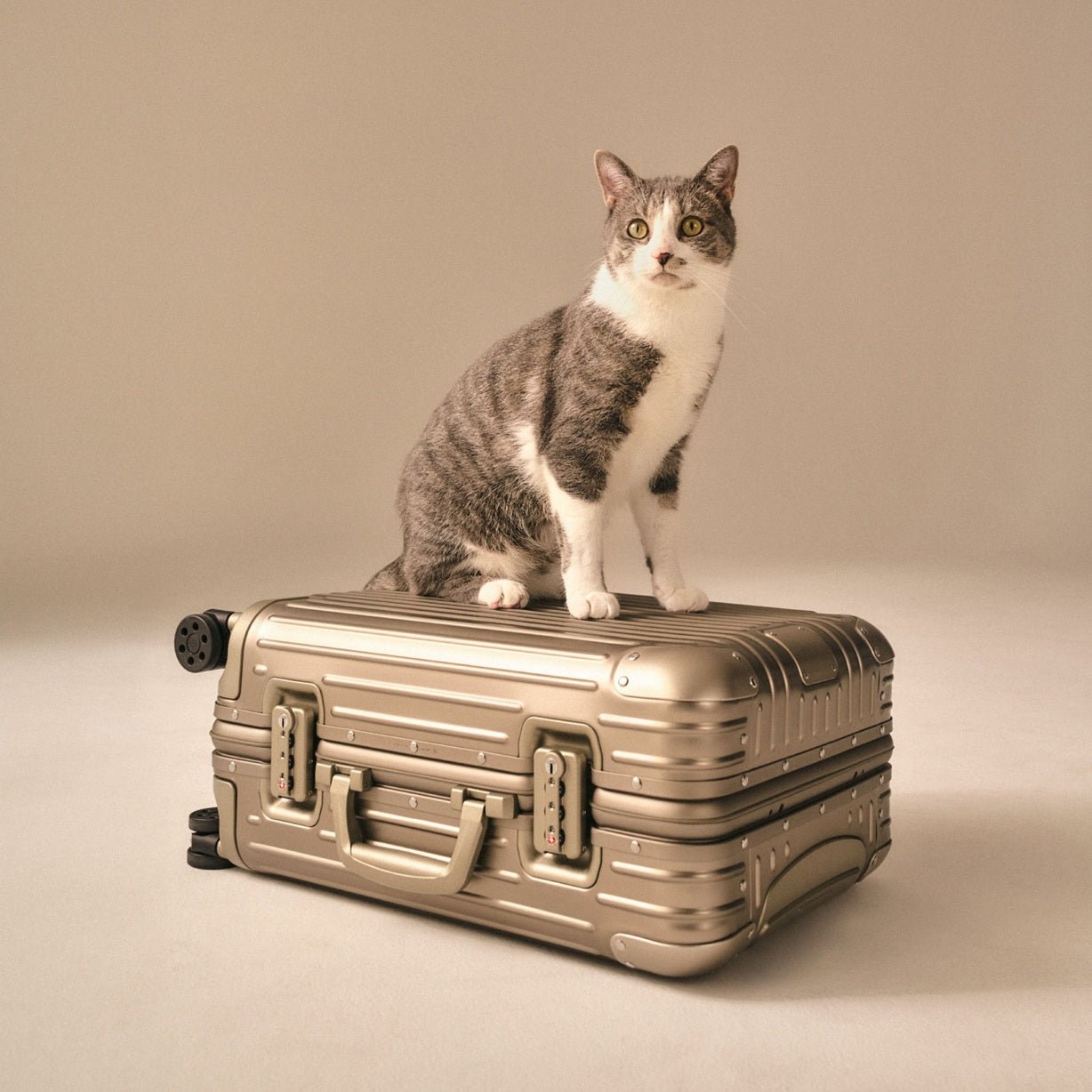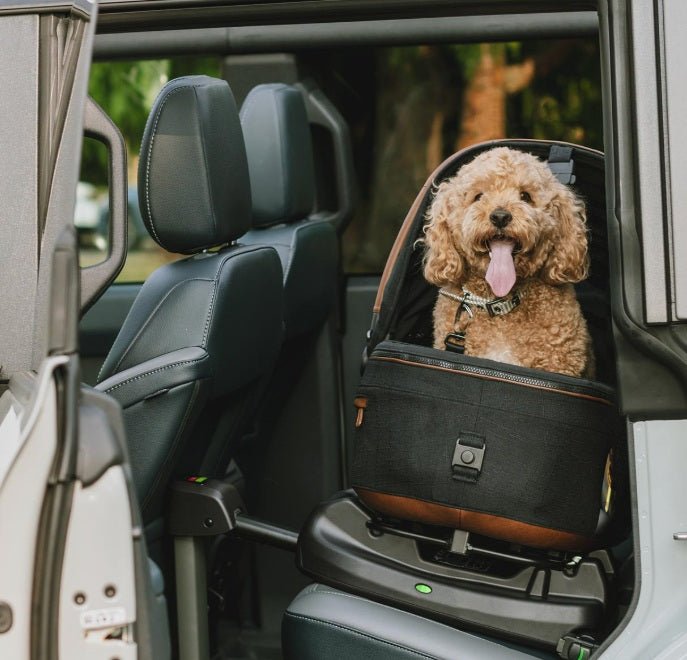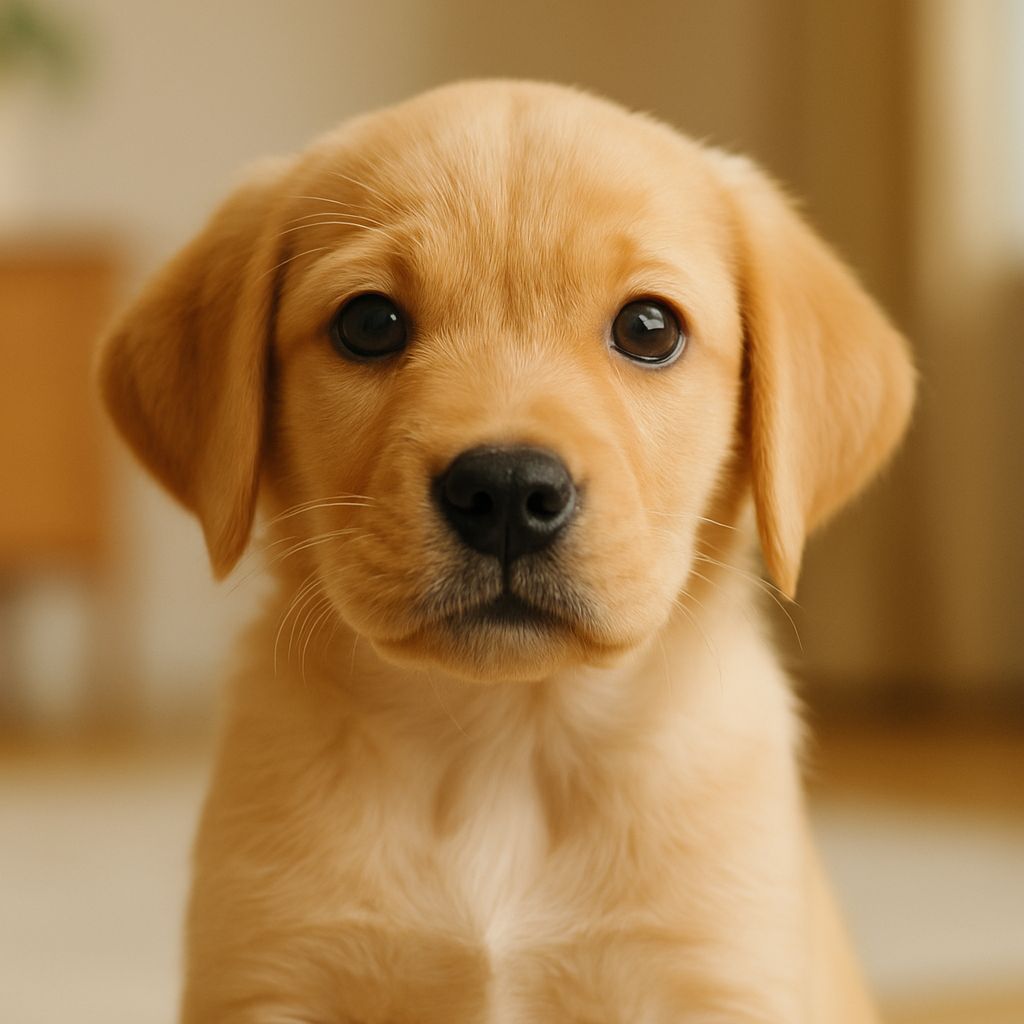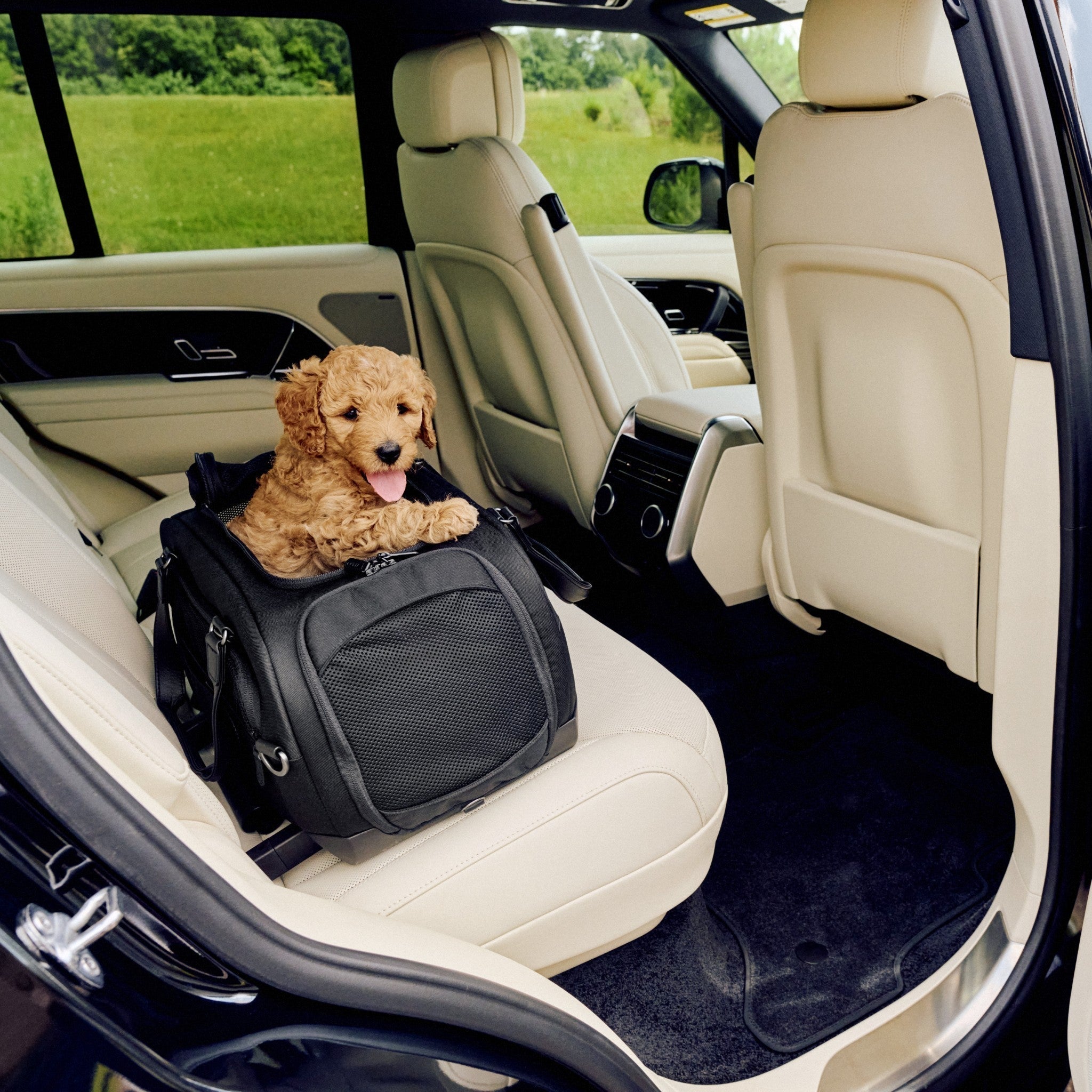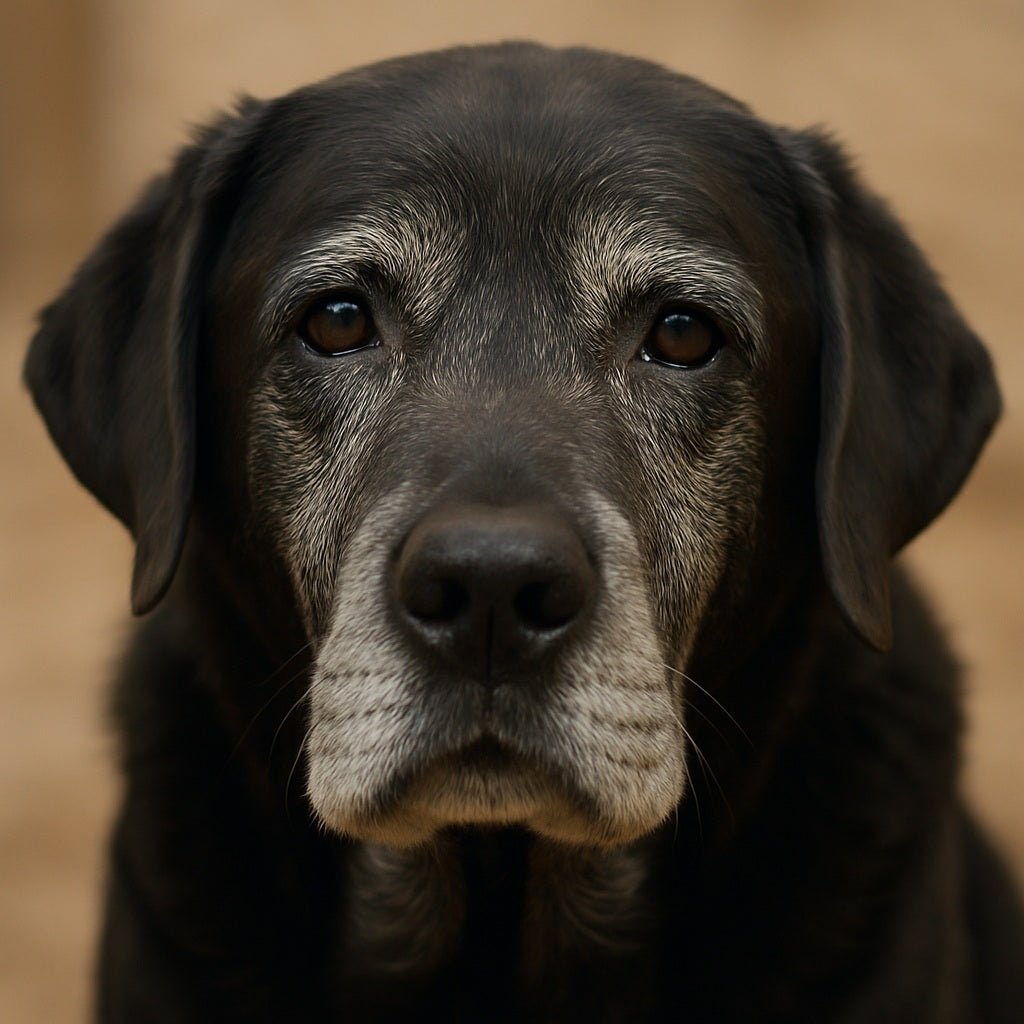Welcome to learning more about aspects related to grooming your dog's coat! In this blog post, we will examine different types of coats and explain how they differ from each other. We will provide you with tips for caring for various coat types. By reading this article, you will learn to understand your furry friend better and be able to take better care of them. Shall we embark on a journey into coat care?
What makes a dog's fur unique?
Every dog's coat is unique, just like its personality. Different dog breeds differ from each other in many ways, one of which is their coat. The coat is not only the dog's appearance but also provides protection from the weather and many external factors.
Depending on the breed, a dog's coat can have different characteristics - it can be short or long, soft or coarse, curly or smooth. The coat can also vary in color and thickness. The type of coat a dog has affects how much time is required for grooming - some coats are significantly more demanding to care for than others.
The characteristics of different dog breeds' coats also stand out depending on the season. For example, many northern breeds have a very thick undercoat in winter to protect against the cold, but in summer the coat thins and its care may differ as a result.
In addition to the dog breed, individual genetic factors can also affect the quality of the coat. Therefore, the coats of two dogs of the same breed are not necessarily exactly the same.
It is also important to understand that a dog's coat is one of the indicators of its well-being. A well-maintained and healthy coat reflects the dog's overall health, and the coat of a well-cared-for dog is shiny, flexible, and free of shedding.

The most important coat types in different dog breeds
Different dog breeds have different types of coats, which is why coat care varies significantly depending on the breed. Some breeds have long and wavy coats, while others have short and curly ones. The care of a dog's coat is also influenced by its coat and skin type. Below, we will go through some of the most common coat types and their care.
Coarse hairWire-haired dogs, such as schnauzers and Airedale terriers, are characterized by a coarse coat that grows throughout the year. The hair follicles of these dogs are particularly strong and produce robust, upright hairs. Caring for a wire-haired dog includes regular brushing and trimming.
Soft furDogs with soft fur, such as the Bichon Frisé and Maltese, have a silky, soft coat. The coat requires extensive care, including daily brushing and regular bathing, to keep it smooth and free of tangles.
Double-layered coatBreeds with a double coat, such as Shelties and German Shepherds, have an undercoat and an outer coat. The outer coat is coarse and protects the dog from the sun's rays, while the undercoat is soft and keeps the dog warm. These dogs require regular brushing, especially during shedding season, to prevent their coat from matting.
Long and straight hairSome breeds, such as Shih Tzus and Yorkshire Terriers, have long, straight hair. The coat can reach the ground and therefore requires significant care. Grooming a long-haired dog includes daily brushing as well as regular washing and trimming.
Caring for a dog's coat is an important part of the pet's overall well-being. Regular brushing and checking the condition of the coat can help detect potential skin diseases or parasitic infections in time.
Remember that every dog is an individual, and therefore the grooming needs of each dog can vary, even within the same breed. Take this into account when choosing grooming products and planning your dog's grooming routine.
Examples of dog breeds and coat types
| Turkish type | Breeds |
|---|---|
| Long-haired breeds | Shih Tzu, Bearded Collie, Afghan Hound, Yorkshire Terrier, Maltese, Bichon Frise, Pekingese, Shetland Sheepdog, Havanese, Silky Terrier |
| Curly-haired breeds | Bolognese, Lagotto Romagnolo, Curly-coated Retriever, Irish Water Spaniel, Portuguese Water Dog, Spanish Rat Terrier, Smooth-haired Miniature Dachshund, Miniature Poodle, American Hairless Terrier, Water Spaniel |
| Soft-coated breeds | Boston Terrier, King Charles Spaniel, Cavalier King Charles Spaniel, French Bulldog, Havanese, Pug, Papillon, Pekingese, Shih Tzu |
| Short-haired breeds | Chihuahua, Dalmatian, Dobermann, English Bulldog, Labrador Retriever, Beagle, Boxer, Rottweiler, Staffordshire Bull Terrier, German Shepherd, Shiba Inu |
| Rare fur types | Bedlington Terrier, Chinese Crested Dog, Komondor, Löwchen, Mexican Hairless Dog, Soviet Zoologist, Otterhound, Peruvian Hairless Dog, Puli's tufted ears, Xoloitzcuintli |
Grooming Tips for Long-Haired Dog Breeds
When grooming a long-haired dog, remember that coat care is much more than just brushing. As an owner, it is important to understand that the coat type often requires regular maintenance and special attention. To achieve the best possible result, follow these guidelines:
- Regular brushing: Brush your dog's coat daily or every other day to keep it tangle-free and beautiful. Brushing long hair also helps remove dust and small debris that may get caught in the dog's coat.
- Bathing: Bathe the dog regularly, but not too often, as it can dry out the coat and skin. Ensure that shampoos and conditioners are suitable for long-haired breeds.
- Healthy Nutrition: Nutrition significantly affects the condition of a dog's coat. Ensure that the dog receives a balanced diet that includes sufficient protein, fat, and other nutrients to keep the coat shiny and healthy.
- Visit to the groomer: For some long-haired breeds, it is recommended to regularly take the dog to a groomer. A professional groomer knows how to handle the coat properly and understands how to maintain its good condition.
Grooming Tips for Short-Haired Breeds
Curly-haired dog breeds, such as poodles and Portuguese water dogs, require regular grooming to keep their coats in good condition. This striking coat may be a bit more demanding to care for, but with the following tips, you can get started.
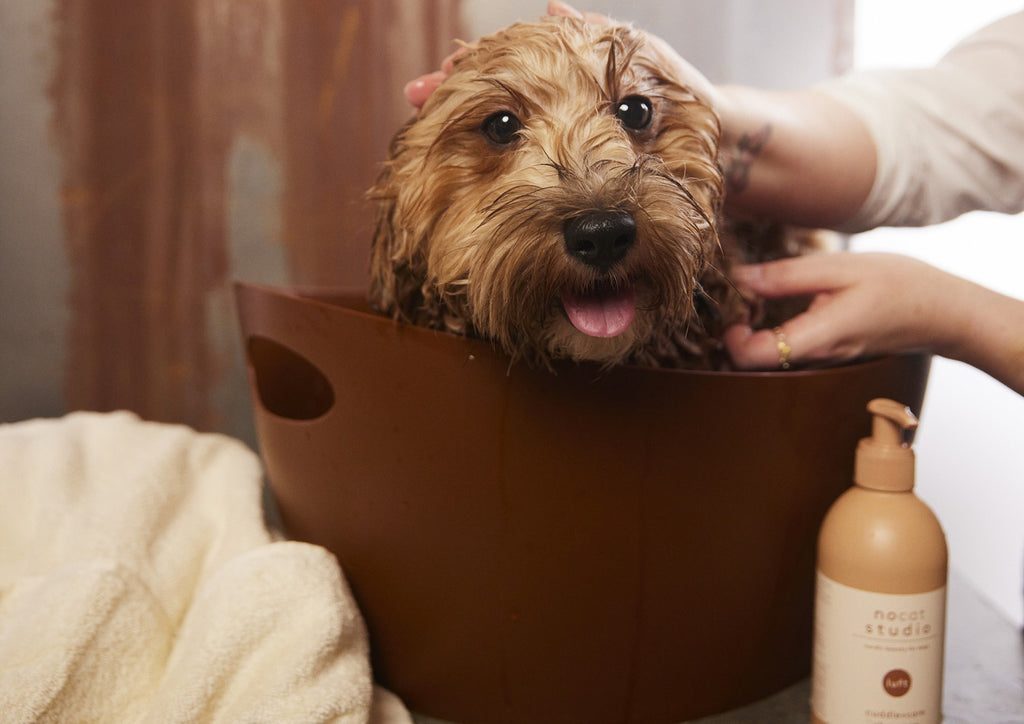
- Regular Brushing: Brush your curly-haired dog daily or at least a few times a week to avoid the formation of tangles and knots. Use a brush suitable for curly-haired dog breeds that you have acquired for this purpose.
- Turkin leikkaus: Curly-haired dogs may need to visit the groomer more often than other breeds. This prevents the fur from growing too long and causing discomfort to the animal.
- The right care products: Always use high-quality, non-toxic shampoos and conditioners such as nocat studio products. These products provide the right amount of moisture and necessary nutrients to maintain a healthy and shiny coat.
- Note the outdoor temperature: Curly-haired dogs often react strongly to extreme temperatures, so dress them warmly in severe cold or avoid direct sunlight on hot summer days.
Care tips for soft-coated breeds
In this section, we will explain how to care for your soft-coated dog's fur, taking into account its unique characteristics.
The soft fur feels silky and is often thin. For this reason, this type of fur can easily become tangled and requires a lot of care.
- Brushing: Brush your dog's coat daily with a long-toothed brush. The soft coat tangles easily, so remember to be gentle to avoid damaging the coat.
- Washing: A soft-coated dog should be washed with a special shampoo designed for soft coats. This helps to maintain the coat's natural softness and shine.
- Grooming: These breeds usually require regular grooming to keep their coat healthy and well-maintained. An easy way to maintain the condition of the coat is to visit a dog groomer regularly.
- Nutrition: High-quality, nutrient-rich food helps keep the dog's coat shiny and in good condition.
Because soft-coated dogs can be sensitive to skin problems, it is important to regularly monitor the condition of their coat and skin. If you notice issues such as redness, flaking, or itching, the best solution is to contact a veterinarian for appropriate treatment and advice.
Care Tips for Rare Fur Types
Some dog breeds are particularly rare due to their unique coat types. These coats may require special attention for care and maintenance. This section examines some of these rare coat types and provides recommendations for their care.
Short-haired or hairless: For example, the Chinese Crested Dog or the Mexican Hairless Dog has a coastal coat or none at all. This surface requires regular skin care. Bald areas should be protected from the sun like humans.
Clinical: Some breeds, such as the Shar-Pei, are particularly wrinkled. These folds can be challenging in terms of care because dirt and bacteria can accumulate in the skin. Gentle and careful massage with a brush or a damp cloth is recommended for this type of coat.
On the other hand, the liveliness of dogs like Irish Water Spaniels and their curly coat, which requires regular trimming. This type of coat is difficult to maintain, and professional help may be necessary, especially if your dog participates in shows.
Regular care is essential for all dogs, but it is even more important for rare coat types. They can create special challenges, especially when they may be more prone to skin irritation or infections. Invest in high-quality, non-toxic grooming products and be vigilant in noticing changes in your dog's skin or coat so you can address potential issues as soon as they arise.
The right grooming products for a dog's coat
When selecting dog grooming products, it is important to consider a few factors. What works for one may not necessarily be suitable for another. Secondly, the dog breed greatly influences the required products and tools. Thirdly, it is crucial to choose non-toxic products that are safe for both your pet and the environment.
Here are basic guidelines for choosing the right care products:
- Choose a shampoo. Not all dog shampoos are created equal. Some are specifically designed for certain coat types, while others are suitable for all kinds of coats. It is important to choose a high-quality shampoo. For instance, if your dog has dry skin, they might benefit from a moisturizing shampoo. Paraben-free and sulfate-free shampoos are generally gentler on a dog's skin.
- Remember conditioner and/or conditioning spray. Conditioner and conditioning spray help keep the dog's coat in good condition. They help to detangle knots and make the coat shiny. Conditioner is applied immediately after washing to a wet coat, but a separate conditioning spray can be used between washes. Choose a quality product that professionals also appreciate. There is a reason for that.
- Use the right brush or comb. There are several different types of brushes and combs designed for grooming different coat types. It is very important to choose the right tools according to the coat type. A slicker brush works well for curly-haired dogs, while owners of double-coated breeds should consider getting a metal comb for grooming.
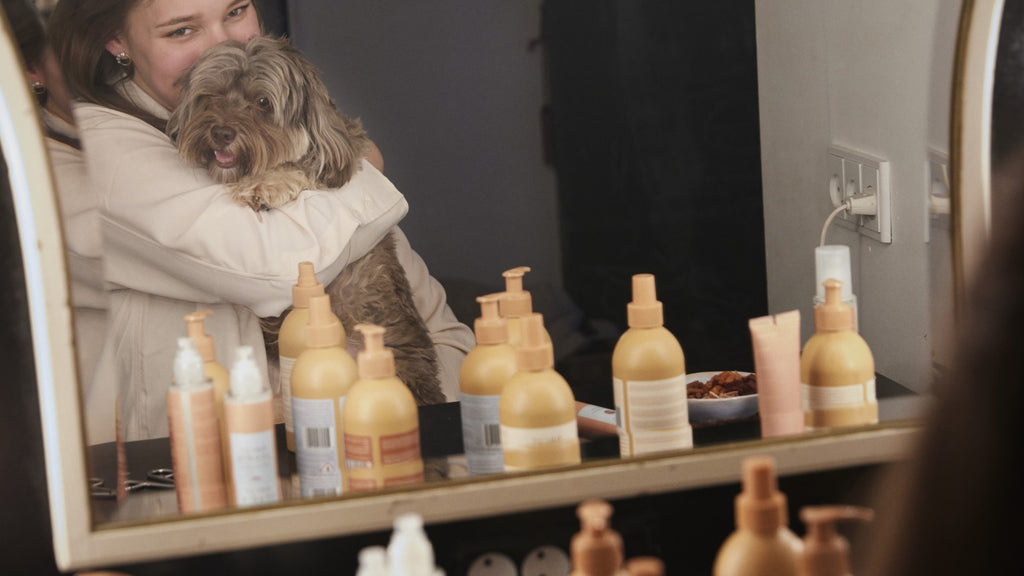
Maintaining a healthy and beautiful coat is not just an aesthetic matter, as it is important for the dog's health. Regular brushing stimulates the skin's blood circulation and helps remove dead hair from the coat. It also allows for checking the skin for potential issues such as irritations, fleas, or ticks.
Do not hesitate to seek advice from professionals or try different products until you find those that best meet your dog's needs and make grooming sessions smooth.
Next, take a look at The Basics of Dog Grooming, and check out Golden Retriever's Tips for Washing Your Dog
Muotitassun high-quality selection of grooming products, appreciated by professionals, can be found here.




